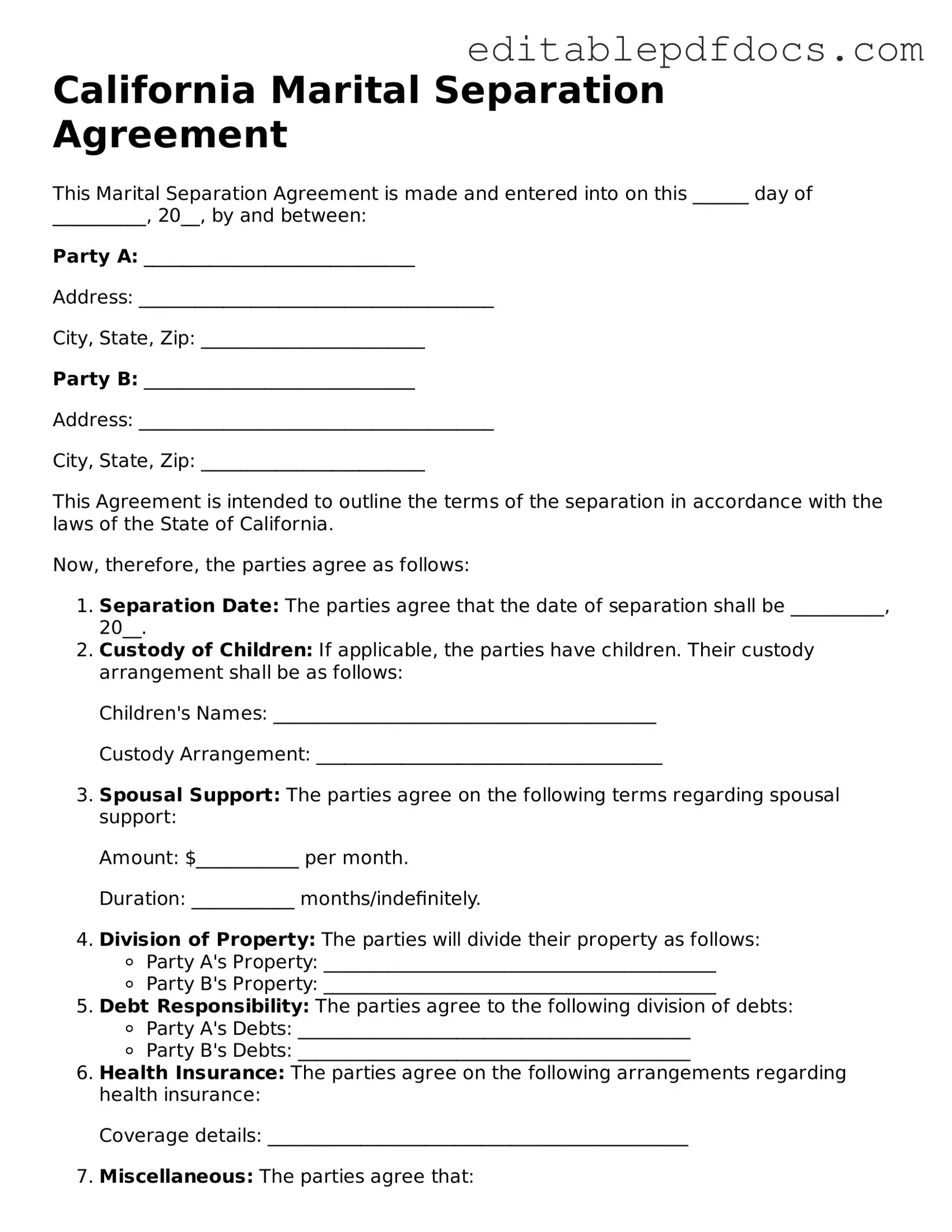Filling out the California Marital Separation Agreement form can be a daunting task. Many individuals make common mistakes that can lead to complications down the line. One frequent error is failing to provide complete and accurate information. Omitting details about assets, debts, or income can result in misunderstandings and disputes later.
Another common mistake is not clearly defining the terms of child custody and support. When parents do not specify their arrangements, it can create confusion and lead to conflicts. Clear communication about visitation schedules and financial responsibilities is essential for a smooth separation.
People often overlook the importance of updating their personal information. If there are changes in addresses or contact details, these should be reflected in the agreement. Keeping this information current helps ensure that all parties can communicate effectively.
Many individuals neglect to consider tax implications when filling out the form. Assets and income can have different tax consequences, and failing to address these can lead to unexpected financial burdens. Consulting a tax professional can provide clarity and prevent future issues.
Another mistake is not having the agreement reviewed by a legal professional. While it may seem tempting to handle the process independently, legal advice can help identify potential pitfalls. A lawyer can ensure that the agreement complies with California laws and adequately protects your interests.
Some people forget to include a dispute resolution clause. This clause can outline how disputes will be resolved if disagreements arise in the future. Without it, parties may find themselves in lengthy and costly legal battles.
Failing to sign the document properly is also a common error. All parties must sign the agreement in the appropriate sections. Not doing so can render the document invalid and unenforceable.
Lastly, individuals sometimes rush through the process without fully understanding the implications of their decisions. Taking the time to review and comprehend each section of the form can prevent regrets and ensure that the agreement meets everyone's needs.
